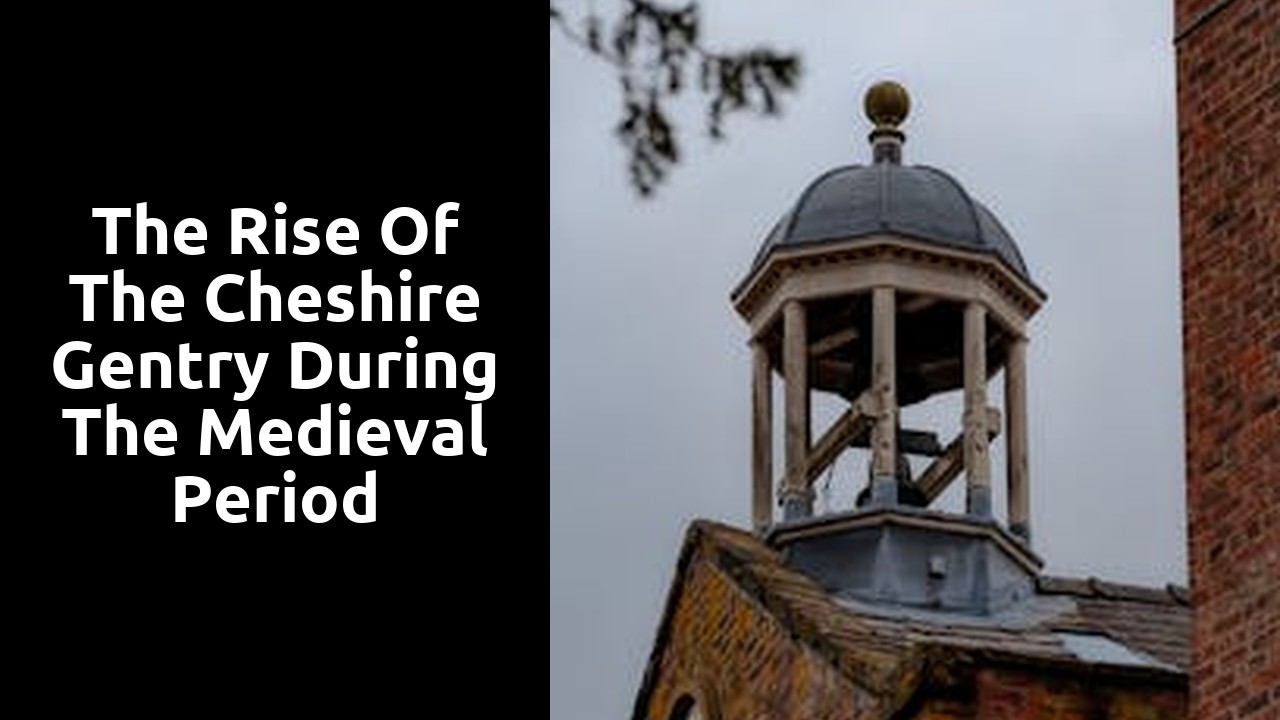
The rise of the Cheshire gentry during the medieval period
Unveiling the Ascendancy of Cheshire's Noble Elites in the Middle Ages
eir social status through the acquisition and consolidation of vast estates.A Kaleidoscope of Creativity: Unveiling Cheshire's Artistic Treasures
The rise of the Cheshire gentry was closely tied to their involvement in the local administration and the feudal system. Many of them held positions of power as sheriffs, justices, or took on roles in the royal administration. This allowed them to exert a significant influence in the affairs of the region and enhance their social standing. Additionally, the Cheshire gentry fostered strong connections with the monarchy, actively participating in royal military campaigns and demonstrating their loyalty to the crown. These alliances further solidified their position as members of the elite class and secured their landholdings.Cheshire, nestled in the heart of England, is a haven for art enthusiasts seeking to delve into a kaleidoscope of creativity. From picturesque rural landscapes to bustling urban centers, this county lures visitors and locals alike with its aching beauty and rich artistic heritage. Unveiling Cheshire's artistic treasures is an invitation to embark on a journey of art appreciation, where the vibrant tapestry of talent is uncovered one brushstroke at a time.
Alongside their involvement in governance and military endeavors, the Cheshire gentry actively engaged in the cultivation and improvement of their estates. They invested in agricultural practices, such as the enclosure of land and the introduction of new farming techniques, thereby increasing productivity and generating substantial wealth. This economic prosperity bolstered their social status, enabling them to partake in the lavish lifestyle and cultural pursuits characteristic of the medieval elite.As you wander through the diverse art galleries of Cheshire, you will be captivated by the sheer breadth of artistic expression on display. From classic to contemporary, the spectrum of styles and genres is a testament to the region's thriving art sc
al Cheshire. These gentry families often owned smaller estates and were members of the local elite, participating in county affairs and holding positions of authority. They formed the backbone of Cheshire's social structure, acting as local justices of the peace, participating in local government, and exercising control over the surrounding communities. Their wealth and status gave them a certain degree of social prestige, and their ties to the magnates allowed them access to important social and political networks.Brushstrokes and Beyond: Delving into the Diverse Artistic Styles of Cheshire
Related LinksOne can lose themselves in the vibrant brushstrokes of impressionist landscapes, where each stroke of paint reveals the artist's emotional connection to the natural world. The rich color palettes and soft, sweeping motion of the brush bring these ethereal landscapes to life, inviting viewers to step into another realm. On the other hand, the contemporary art scene in Cheshire pushes boundaries, with artists exploring unconventional techniques and materials to challenge societal norms and provoke thought. As visitors enter these galleries, they are confronted with bold and thought-provoking installations that reflect the changing times and spark conversations on issues ranging from gender identity to environmental sustainability.
Monastic life and religious orders in medieval CheshireThe Art Lover's Paradise: Navigating Cheshire's Thriving Art CommunityCheshire's medieval market townsCheshire's thriving art community is a true paradise for art lovers. With a multitude of galleries scattered throughout the county, there is no shortage of creative